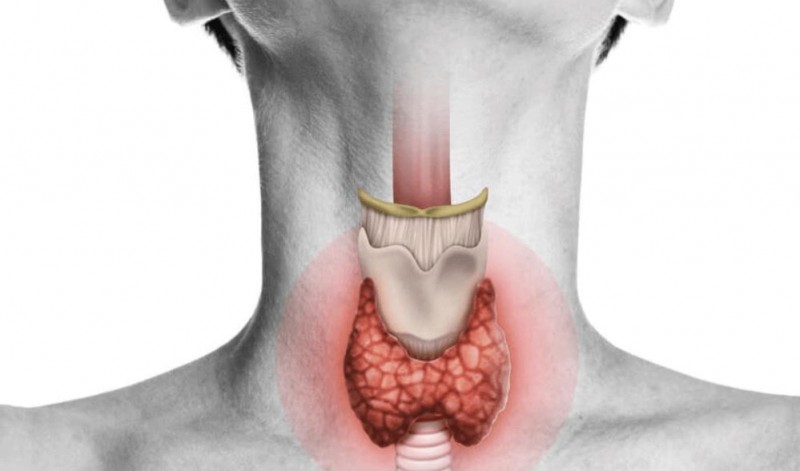
Thyroid disorders have become increasingly prevalent in today's fast-paced life, exacerbated by unhealthy eating habits leading to various serious health conditions. Termed as a "silent killer," thyroid issues often manifest symptoms at a later stage, with women being more susceptible. Unfortunately, there's no permanent cure for thyroid disorders, necessitating a combination of medication and lifestyle modifications for management. Alongside medication, doctors recommend lifestyle changes, including dietary adjustments and regular physical activity. Incorporating yoga into your routine can also be beneficial for managing thyroid problems.
Here are some yoga poses that can aid in controlling thyroid issues:
Sarvangasana (Shoulder Stand):
Sarvangasana, also known as the Shoulder Stand, is considered one of the most beneficial yoga poses for thyroid patients due to its effects on the thyroid gland's function and overall circulation. In this pose, the body is inverted, allowing gravity to stimulate blood flow towards the thyroid gland situated in the neck region.
Technique: To perform Sarvangasana, lie on your back with legs extended and arms beside your body. Lift your legs, hips, and back off the floor, supporting your lower back with your hands. Keep your legs straight and perpendicular to the floor, with your toes pointing upwards.
Benefits: By reversing the flow of blood towards the thyroid gland, Sarvangasana helps in improving its function and hormone production. It also stimulates the parathyroid glands, which are essential for calcium metabolism. Additionally, this pose enhances circulation to the brain, promoting mental clarity and reducing stress levels, which are often associated with thyroid imbalances.
Precautions: Individuals with neck or spine injuries should avoid or modify this pose. Beginners should practice under the guidance of a certified yoga instructor to ensure proper alignment and avoid strain on the neck and shoulders.
Vajrasana (Thunderbolt Pose):
Vajrasana, commonly known as the Thunderbolt Pose, is a simple seated yoga pose that aids in digestion and can be beneficial for thyroid patients dealing with digestive issues often associated with thyroid disorders.
Technique: Sit on your heels with knees bent and big toes touching. Keep your spine straight and place your hands on your thighs. Take deep breaths and relax in this pose.
Benefits: Vajrasana stimulates the digestive organs, including the thyroid gland, thereby promoting better digestion and absorption of nutrients. Improved digestion can indirectly benefit thyroid health by ensuring proper assimilation of nutrients required for thyroid hormone production. Additionally, this pose helps in calming the mind and reducing stress levels, which can have a positive impact on thyroid function.
Precautions: Individuals with knee or ankle injuries may find it uncomfortable to sit in this pose for an extended period. It's essential to listen to your body and avoid straining the knees or ankles. If discomfort persists, using props like a cushion or bolster under the buttocks can help alleviate pressure on the knees.
Matsyasana (Fish Pose):
Matsyasana, also known as the Fish Pose, is a backbend pose that stretches the neck and throat region, stimulating the thyroid gland and improving circulation to the area.
Technique: Start in Padmasana (Lotus Pose) and gradually lie back, supporting your body weight with your elbows and forearms on the ground. Then, lower your back until it touches the floor and arch your back upwards. Hold your toes with your hands, with your elbows on the ground. Your head should tilt backward, aiming to touch the ground. Hold this pose while breathing deeply.
Benefits: Matsyasana stretches the muscles of the neck and throat, stimulating the thyroid gland and improving blood circulation to the area. This pose also opens up the chest, facilitating better oxygenation of the body and promoting relaxation. Additionally, Matsyasana helps in relieving tension in the neck and shoulders, common areas of discomfort for thyroid patients.
Precautions: Individuals with neck injuries or cervical spine issues should approach this pose with caution or avoid it altogether. It's essential to maintain a gentle stretch in the neck and avoid overextending or straining the muscles. Beginners may benefit from using props like a yoga block or rolled-up towel under the upper back for support.
Bhujangasana (Cobra Pose):
Bhujangasana, also known as the Cobra Pose, is a gentle backbend that stretches the front of the body, including the neck and throat region, thereby stimulating the thyroid gland.
Technique: Lie on your stomach with palms beside your chest. Inhale and lift your chest off the floor, straightening your arms. Keep your elbows close to your body and shoulders away from your ears. Look upwards and hold the pose, focusing on breathing deeply.
Benefits: Bhujangasana stretches the muscles of the neck and throat while opening up the chest and improving respiratory function. This pose stimulates the thyroid gland and enhances circulation to the area, promoting better thyroid function. Additionally, Bhujangasana helps in strengthening the back muscles and improving posture, which can alleviate strain on the neck and shoulders commonly experienced by thyroid patients.
Precautions: Individuals with back injuries or herniated discs should approach this pose with caution and avoid overextending the spine. It's essential to maintain length in the lower back and avoid compressing the lumbar spine. Beginners may benefit from practicing a modified version of the pose with elbows bent and forearms on the ground for support.
Overall, incorporating these yoga poses into a regular practice can be beneficial for thyroid patients in managing their condition. However, it's essential to practice with awareness, listen to your body, and consult with a healthcare professional before starting any new exercise regimen, especially if you have pre-existing health conditions. Additionally, practicing under the guidance of a certified yoga instructor can ensure correct alignment and technique, minimizing the risk of injury and maximizing the benefits of each pose.
Want to lose weight? eat the whole egg or just the white part
Doctor Faces Dismissal After Conducting Pre-Wedding Photoshoot in Hospital Operation Theatre